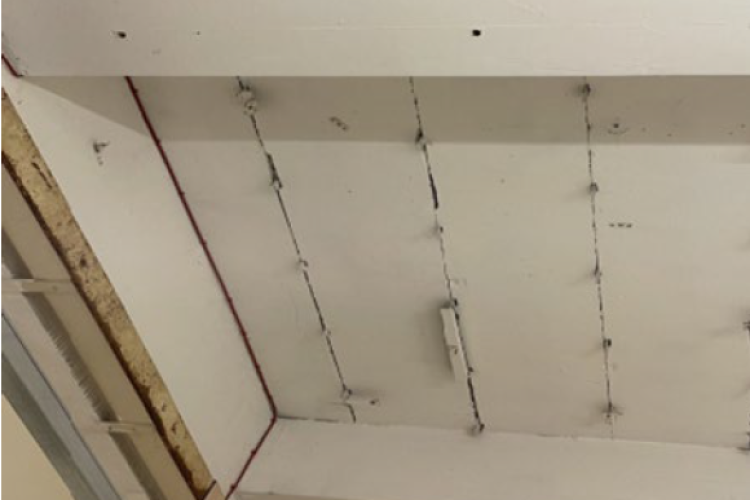 Reinforced autoclaved aerated concrete (RAAC) is a lightweight material that was predominantly used in flat roofing, as well as in floors and walls, from the 1950s to the 1990s.
Reinforced autoclaved aerated concrete (RAAC) is a lightweight material that was predominantly used in flat roofing, as well as in floors and walls, from the 1950s to the 1990s.
It serves as a cost-effective alternative to standard concrete, with a quicker production process and easier installation. RAAC is aerated, resembling the texture of an Aero chocolate bar, but it exhibits lower durability, typically lasting around 30 years. Its structural behaviour differs significantly from traditional reinforced concrete.
Furthermore, RAAC is susceptible to structural failure when exposed to moisture due to its porous nature, which allows water infiltration. In such cases, any reinforcing rebar within RAAC can also corrode, rust, and weaken.
To mitigate these issues, RAAC is often coated with other materials, such as bitumen on roofing panels, although these coatings can also degrade over time.
The Standing Committee on Structural Safety (SCOSS) has pointed out that RAAC, despite being referred to as “concrete,” differs significantly from traditional concrete and is much weaker due to its production method.
Loughborough University has reported that there are tens of thousands of these structural panels already in use, with many displaying signs of wear and deterioration.
The Health and Safety Executive has stated that RAAC has exceeded its expected lifespan and may “collapse with little or no notice.” The identification of these risks dates back to around 1961, shortly after the UK first began using RAAC. The Institution for Structural Engineers also noted the substantial differences between RAAC and traditional concrete and suggested that the term “concrete” might be misleading when applied to these aerated products.
A report indicated that short-term exposure to moisture reduces RAAC strength by approximately 13%, while long-term exposure to “polluted air” can reduce it by 40%. Safety concerns related to aging RAAC were first reported in the 1980s and 1990s when roof collapses led to building demolitions.
A government-funded report from the Building Research Establishment in 1996 found RAAC panels cracking in a housing development, as well as cracks and bends in panels installed in schools. Although it found no immediate safety risks, it recommended annual inspections for RAAC panels in visually poor condition and inspections every five years for those in good condition.
In 2002, another report by the same body made three additional conclusions:
- The material used to coat RAAC in panels over 20 years old had likely become compromised.
- Corrosion could occur without visible signs of poor panel condition, posing a risk of collapse without warning in panels over 20 years old.
- Some panels did not meet regulations when initially installed.
To address these risks, the government has been aware since 1994 that some public sector buildings contain potentially compromised RAAC and has monitored their condition since 2018. New guidance was issued in 2021 and 2022 on how to manage RAAC, and the Department for Education (DfE) sent out a questionnaire to collect information about the use of RAAC in schools across the country.
Schools Minister Nick Gibb stated that expert advice had previously indicated that it was safe to continue using buildings with RAAC that were not in a critical condition. However, following the collapse of a previously considered low-risk RAAC beam over the summer, schools identified with RAAC have now been labelled as potentially dangerous and have been closed or partially closed at short notice.

